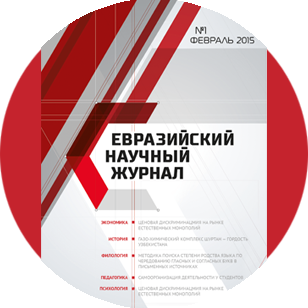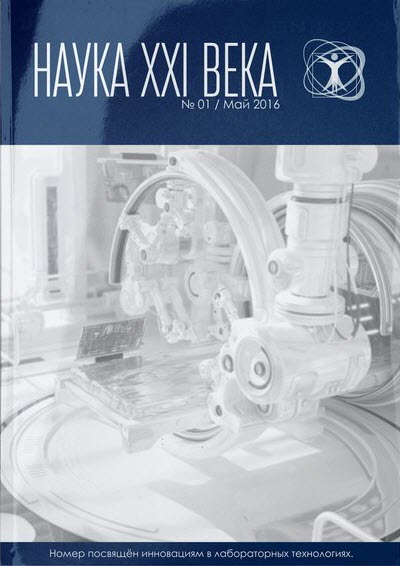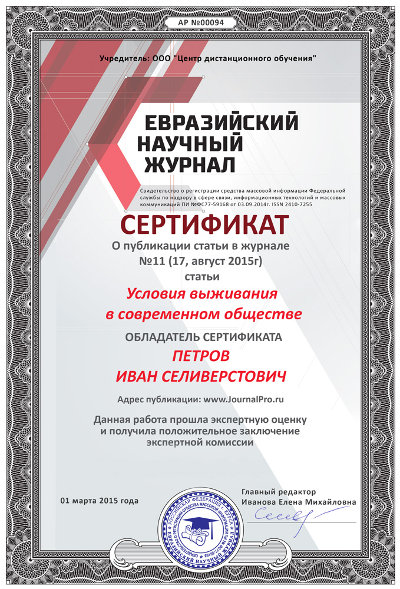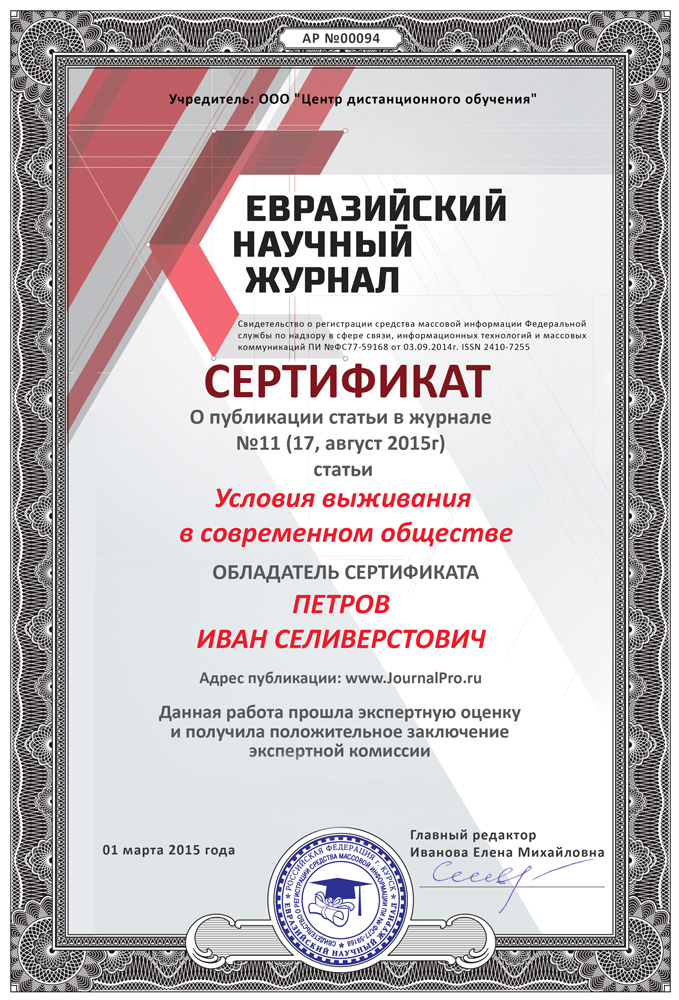Срочная публикация научной статьи
+7 995 770 98 40
+7 995 202 54 42
info@journalpro.ru
FEATURES OF PHRASEOLOGICAL UNITS OF MODERN ENGLISH
Рубрика: Филологические науки
Журнал: «Евразийский Научный Журнал №5 2020» (май, 2020)
Количество просмотров статьи: 7244
Показать PDF версию FEATURES OF PHRASEOLOGICAL UNITS OF MODERN ENGLISH
Ташева Эътибор Бахтиёровна,
студентка магистратуры направления "Лингвистика",
Самаркандский государственный институт иностранных языков,
Узбекистан
Abstract: This article discusses the phraseological units of modern English, its history and development paths, as well as different types of phraseological units.
Keywords: phraseological units, teaching English, speech, language, phraseological expressions
The English language has a thousand-year history. During this time, it has accumulated a large number of expressions that people found successful, accurate and beautiful. So, there was a special layer of language — phraseology, a set of stable expressions that have an independent meaning. Learning English is widely spread in our country.
A good knowledge of the language, including English, is impossible without knowledge of its phraseology. Knowledge of phraseology makes it extremely easy to read both journalistic and fiction literature. Reasonable use of phraseological units makes speech more idiomatic.
The aesthetic aspect of the language is enhanced by using phraseological expressions that are not translated verbatim, but are reinterpreted. “With the help of idioms, as with the help of various shades of colors, the informational aspect of language is supplemented by a sensually intuitive description of our world, our life.”
The world of phraseology of modern English is large and diverse, and every aspect of its research, of course, deserves due attention.
Borrowings are one of the main sources of replenishment of English phraseology. Borrowings from English literature are especially numerous. There are separate borrowings from the literature of Latin, Greek, French, Spanish, Italian and other languages.
For students of English as a foreign language, this layer of language is difficult to master, but after mastering phraseological units, we begin to speak like the English, we understand them in half a word, our speech readiness increases dramatically. We can Express our thought briefly and very accurately, being sure of the correctness of its expression.
Phraseology (Greek: phrasis — “expression”, logos — “teaching”) is a branch of linguistics that studies stable combinations in language. Phraseology is also called a set of stable combinations in the language as a whole, in the language of a particular writer, in the language of a particular work of art, etc.
Phraseology has emerged relatively recently as an independent linguistic discipline. “The subject and tasks, scope and methods of studying it are not yet clearly defined, have not received full coverage.”
The tasks of phraseology as a linguistic discipline include a comprehensive study of the phraseological Fund of a particular language. Important aspects of the research of this science are: stability of phraseological units, system of phraseology and semantic structure of phraseological units, their origin and main functions. A particularly complex branch of phraseology is the translation of phraseological units, which requires considerable experience in the field of research of this discipline.
The subject of the history of phraseology is the study of the primary, initial forms and meanings of phraseological units, determining their sources from all available monuments, identifying the areas of their use in different epochs of the language, as well as establishing the volume of phraseological composition and its systematic ordering in a particular historical epoch of language development.
Equivalence of phraseology to the word
The development of phraseology as a linguistic science has recently presented researchers with a very complex problem — the relationship of a phraseological unit with a word. In modern linguistics, there are different points of view regarding the very formulation of this question. Some consider PU to be equivalent to words, others point to their correlation with the word, replacing the theory of equivalence with the theory of correlation of phraseological combination with the word.
It should also be borne in mind that Proverbs and sayings, i.e. phraseologisms with sentence structure, can only be identified using sentences, for example, birds of a feather flock together — people who have the same interests, ideas, etc. are attracted to each other and stay close together; the blind leading the blind — a situation in which the person who is leading or advising others knows a little as they do.
The semantic integrity of the PU can be established by comparing its meaning with the meaning of its components as separate words, as well as identifying the features of its use in the context.
In the problem of “phraseology and the word” there are mainly two directions: a narrow, lexicological understanding of phraseology as an integral part of lexicology, PU as the equivalent of a word, and a broad understanding of phraseology as an independent linguistic discipline.
Phraseological splices
Phraseological splices have a number of characteristic features:
1. they may include so-called necrotisms-words that are not used anywhere except for this fusion, and are therefore incomprehensible from the point of view of the modern language;
2. part of adhesions can include archaisms;
3. they are syntactically non-decomposable;
4. in most cases, it is not possible to rearrange components in them;
5. they are characterized by impenetrability — they do not allow additional words in their composition.
Phraseological units
“Phraseological unities are somewhat closer to phraseological splices in their imagery and metaphor.”
Characteristic features of phraseological units:
1. vivid imagery and the resulting possibility of matching with parallel existing phrases (cf.: to throw dust into smb.’s eyes, to be narrow in the shoulders, to burn one’s fingers, to burn bridges);
2. preserving the semantics of the individual components (to put a spoke in smb.’s wheel);
3. inability to replace some components with others (to hold one’s cards close to one’s chest);
4. emotional and expressive coloring plays a crucial role (to throw dust into smb.’s eyes, to paint the devil blacker than he is);
5. the ability to enter into synonymous relations with individual words or other phraseological units (to gild refined gold = to paint the lily).
Conclusion
The phraseological Fund of the English language is so large that a complete study of it would not fit into the framework of this work. Nevertheless, on the example of the considered phraseological units, it is possible to clearly imagine how diverse in their semantics and expressiveness the PU of the modern English language are. Thanks to the literary works of writers and poets, both in the UK and around the world, the English language currently has a huge number of phraseological units. But we should not forget that from the history and culture of various countries of the world in the English language also came a huge number of phraseological units.
LITERATURE
- Алехина А.И. Фразеологическая единица и слово. — Минск, 1991.
- Амосова Н.Н. Основы английской фразеологии. — Л.,1989.
- Аничков И.Е. Труды по языкознанию. — С-Петерб: Наука, 1997.









